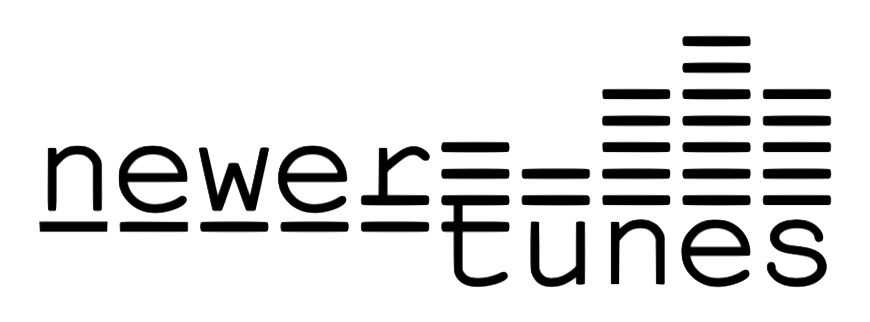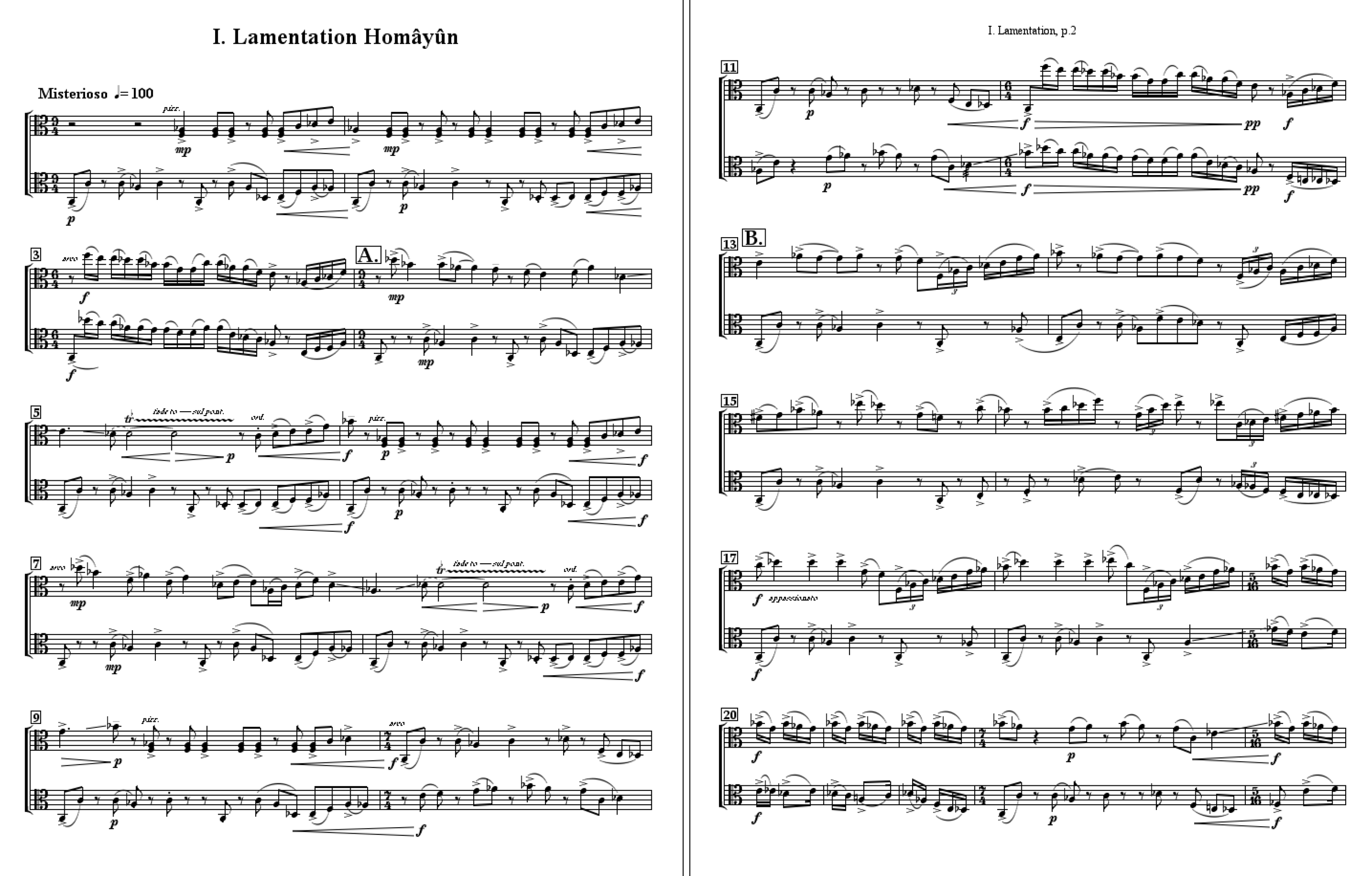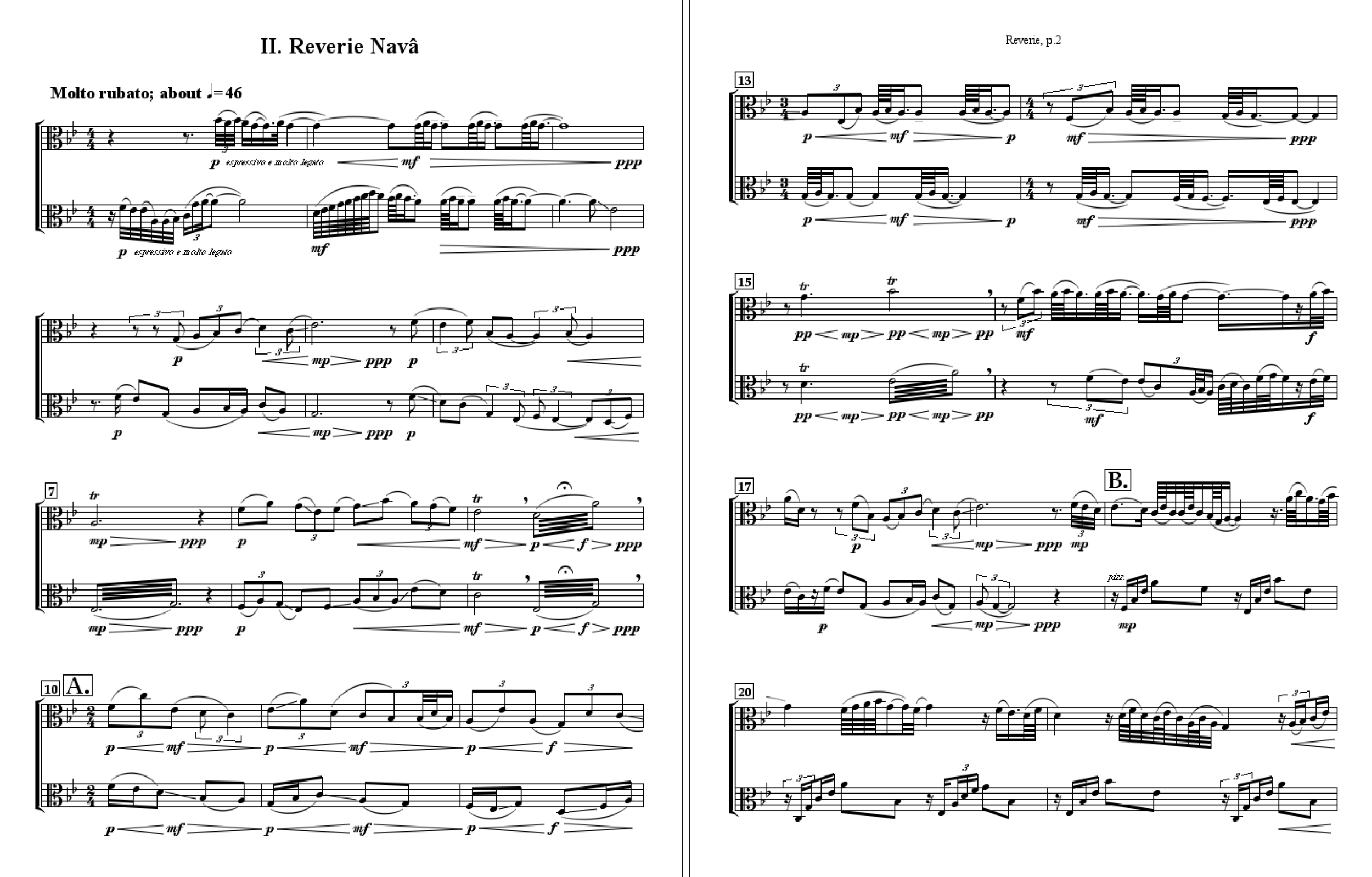Three Duos on Persian Dastgâhs (2021), for Two Violas
The concept of dastgâh in Persian classical music is not directly analogous to the Western concept of scale or mode, though they can – within limits – be written in Western notation as such. The system more resembles other ancient musics of Greece, Arabia, and India, and Persian music includes significant influences from all of these. This music is admittedly more Western than Persian. The dastgâhs are treated essentially in the Western manner, as scales offering limitless options. On the other hand, the pitch content of the modes has been adhered to rather strictly and each movement strives for a mood that would be considered appropriate to that mode in Persian musical thinking. Also authentic is a penchant in melodic lines for repeated notes, repetitions of short motives, and general busy-ness. Frequent glissandi and emphases on dissonant pitches are loosely analogous to Persian practices. Playing time 12-13 minutes; professional level. $15 for score, parts, & demo; order here.
The dastgâh Homâyûn in Persian music is used to elicit feelings of deep mourning or pathos in the listener. This dastgâh is used here as a scale resembling phrygian dominant. I imagine a state of deep sorrow alternating between quiet but obsessive brooding and convulsive outbursts.
In the dastgâh Navâ implications of lydian, mixolydian, and aoelian modes are all possible. In Persian music the dastgâh Navâ is expressive of serenity and introspection, which is the intent here. This movement is the most thoroughly Persian in character; many melodies have an insistent, ornamented character reminiscent of the Persian singing style.
The dastgâh Mâhûr is considered to be generally energetic and cheerful, with the Western mixolydian and dorian modes on G possible. This movement adheres to the cheerful stereotype of Mâhûr, with the frequent use of uninhibited figures & gestures reminiscent of Cajun or bluegrass fiddling, including a brief fiddlers’ duel.



